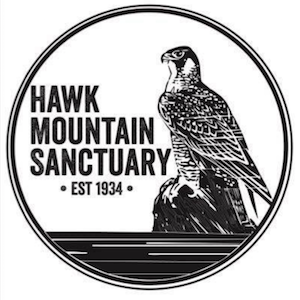Hanover Bald Eagle Blog # 10
Feb. 8, 2019
In partnership with Pennsylvania Game Commission and Comcast Business .
Many of us have had the privilege of observing bald eagles in the wild; while not a common sight, it is most certainly a spectacular one! Lucky for us, with the growing population and luxury of technology we are able to have these experiences and witness truly intimate moments with Liberty and Freedom on a regular basis. This unrestricted accessibility makes it easy to forget that these large, majestic birds haven’t always been so abundant. They have fought hard to survive and carry on their populations through many hardships.
Since the early 1800s, raptor populations were threatened. Many species of raptors, including bald eagles, were shot because they were seen as pests and were thought to be preying upon livestock. Moving ahead to the 1940s, dichlorodiphenyltrichloroethane (DDT) was commercially introduced and became a commonly used pesticide throughout the United States. More than 50 million pounds of DDT were sprayed onto fields, forest, and cities in just under ten years. Although useful in protecting people from mosquito-borne illnesses such as yellow fever or malaria, pesticides often end up in places we don’t want them to go and can have unknown, adverse effects on ecosystems. This is exactly what happened with DDT. As it was sprayed for many years, DDT made its way into waterways. Aquatic plants and fish absorbed the chemical which then bioaccumulated through food webs until it eventually reached toxic levels in predatory bird species.
Thankfully, a biologist by the name of Rachel Carson started noticing. She was able to pinpoint that DDT, although not killing birds of prey directly, was accumulating in their bodies and affecting the digestion and use of calcium; resulting in thin, fragile eggshells that would break during incubation. Her research and discoveries expressed in her book Silent Springs (published in 1962), caught governmental interest and resulted in the bald eagles being one of the first species protected by the endangered species act in 1967. However it was not until 5 years after, in 1972, that DDT was banned by the Environmental Protection Agency.
Protecting these birds was one of the first steps in their recovery. Waiting for ecosystems to recover was another necessary step before restoration programs could begin. With only three nest remaining in Pennsylvania in 1983, the Game Commission stepped in. Due to their relentless work, the bald eagle population slowly began to recover. By 2006, for the first time since DDT, there were more than 100 nests in Pennsylvania. Since then, the population has continued to rise.
By 2014 Bald Eagles in Pennsylvania:
- Had at least 150 active nest spread throughout the state
- Had successful pairs in at least 40 counties
- Had at least at 60% success rate for the known nests
- At least 1.2 eaglets fledged for each successful nest
Currently, bald eagles are protected under the Game and Wildlife Code in PA. As of 2007, they are no longer listed as threatened or endangered under the Endangered Species Act, but are still protected by the Bald and Golden Eagle Protection Act as well as the Migratory Bird Protection Treaty Act, and Lacey Act.
Only fifty years ago, our national symbol was close to extinction throughout most of its range and Pennsylvania habitats were suffering. Just in this past week we have seen a diversity of visitors (such as squirrels, blue jays, nuthatches, mice) and prey items (fish and ducks) at Liberty and Freedom’s nest. There is a reason that Liberty and Freedom have chosen this spot and continually come back. Seeing animals from all levels of the food chain can give us hope that this ecosystem is sustainable and thriving, and will hopefully continue to be for years to come!
THANK YOU HAWK MOUNTAIN FOR THIS WEEK'S BLOG ENTRY!

RETURN TO HANOVER BALD EAGLE BLOGS
WATCH THE HANOVER BALD EAGLE LIVE CAMS
For over 20 years, HDOnTap has provided live streaming solutions to resorts, amusement parks, wildlife refuges and more. In addition to maintaining a network of over 400 live webcams, HDOnTap specializes in design and installation of remote, off-grid and otherwise challenging live streaming solutions. Contact press@hdontap.com for all media needs, including images and recordings.